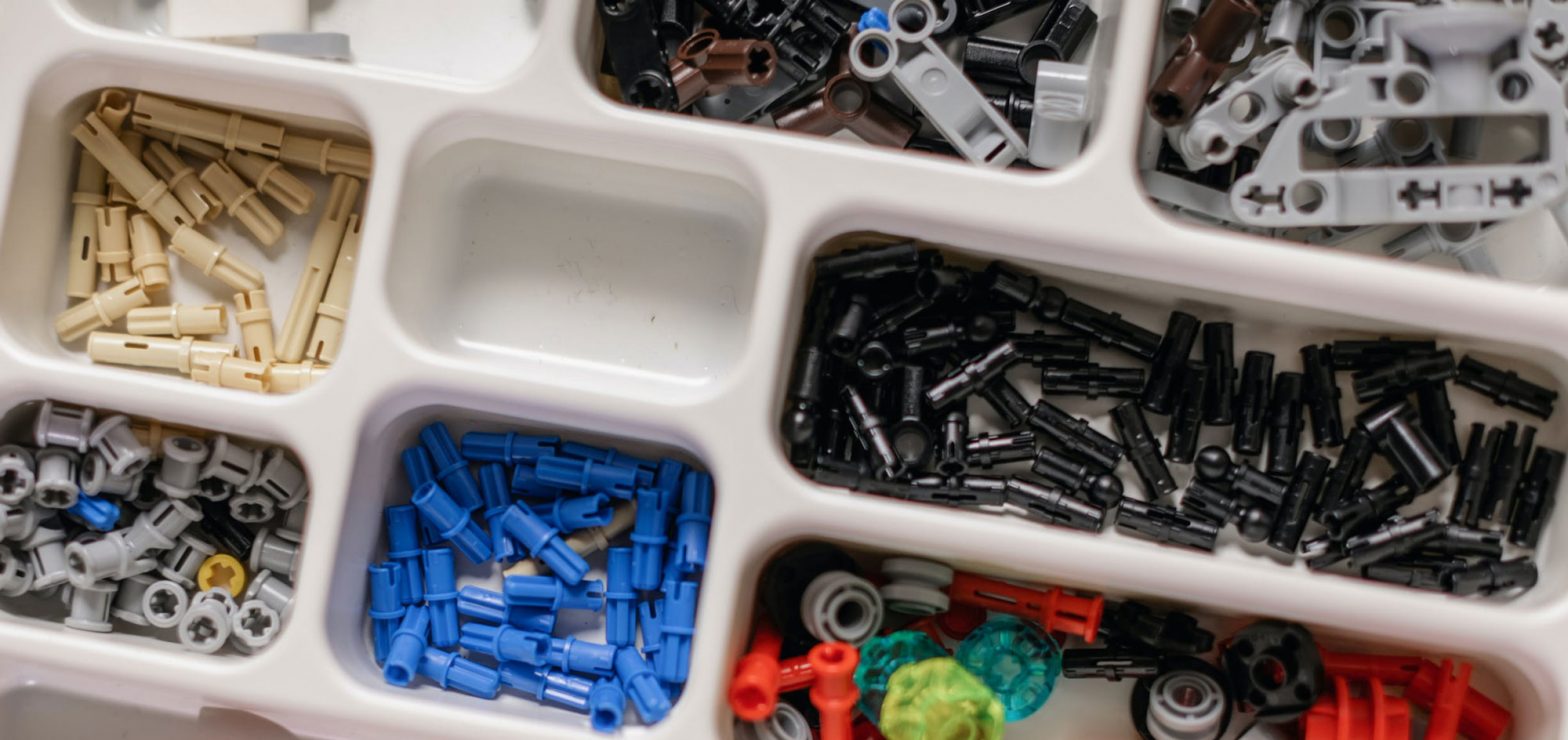Google “effective storytelling”, and you’ll likely come across many pieces that talk about using the elements of surprise and delight to enhance your storytelling, whether it’s written prose, a video, or a presentation.
Surprise and delight were top of mind as I worked on a recent online demo for a client. The demo focused on the process of mapping data and content for a part of a website that our team was redesigning for the client. While this was important work and interesting on a professional “in the weeds” level, it wasn’t exactly a scintillating subject for a presentation.
As I prepared the script and visuals for the demo, I thought about how to inject some interesting touches that would help capture the client’s attention while serving the larger goal of explaining our work. Eventually, a solution came to me — Legos!
As I thought about the redesign and the data and content mapping, I saw a similarity between those processes and building things with Legos. For part of the process, we started out with known building blocks and figured out what we can build with them. For another part of the process, we started out with the image of the thing we wanted to build and had to figure out if we had the pieces to build it.
Homing in on that metaphor, I opened my presentation with a brief diversion into Legos, accompanied by Lego-related visuals. This tapped into the delight that many people get from playing with Legos. It’s also an unusual opening that can help grab the audience’s attention.
Then, I took it a step farther. When you see a pile of Legos, you don’t want to just look at it; you want to play with the pieces. So instead of merely showing static pictures of Legos in my visuals, I devised a segment where as I spoke, I moved images of individual Lego pieces around the screen. I hid the movable pieces within a photo of a large pile of Lego bricks so that it wasn’t obvious that you could actually “play” with the pile until I started pulling individual bricks from it. This injected an element of surprise and also added to the sense of delight.
(In a case of the message influencing the medium, these storytelling decisions not only affected the script and visuals, but also the tool and format I used for the demo. Instead of a slide deck, I went with a Mural board, which gave me the interactivity needed to move Lego pieces around the screen.)
Of course, if we just open with the Lego metaphor and then abandon it for the rest of the presentation, it becomes merely a cheap gimmick for attention. So I made sure to refer back to the metaphor at strategic points later in the demo, emphasizing how it connected to our work and using it to illustrate how we approached a particular part of the process. This helped to communicate a potentially complicated and dry topic in a more approachable, interesting way.
All in all, the demo went smoothly, and the Legos definitely made an impression. Here’s a clip of the Lego portion of the demo, including the part where I was moving pieces around the screen (I’ve obscured file information on the screen to hide the client’s identity).

